Because of the variety of goals fostered by participatory attendees, known as "Burners", Burning Man does not have a single focus. Features of the event are subject to the participants and include community, artwork, absurdity, decommodification, and revelry. Participation is encouraged.[82][83]
The Burning Man event and its affiliated communities are guided by ten principles that are meant to evoke the cultural ethos that has emerged from the event. They were originally written by Larry Harvey in 2004[84] as guidelines for regional organizing, then later became a universal criterion of the general culture of the multifaceted movement. They are:[85]
- radical inclusion
- gifting
- decommodification
- radical self-reliance
- radical self-expression
- communal effort
- civic responsibility
- leaving no trace
- participation
- immediacy.
The descriptions in quotes are the actual text:
Radical inclusion[]
"Anyone may be a part of Burning Man. We welcome and respect the stranger. No prerequisites exist for participation in our community." This was written with a broad stroke for general organizing, meaning anyone is welcome to the Burning Man culture. Prerequisites for the Burning Man[85] event are participants expected to provide for their own basic needs, follow the guidelines stated in the annually updated event "survival guide," and purchase a ticket to get in.[86]
Gifting[]
"Burning Man is devoted to acts of gift giving. The value of a gift is unconditional. Gifting does not contemplate a return or an exchange for something of equal value." Instead of cash, participants at the Burning Man event in the Black Rock Desert are encouraged to rely on a gift economy, a sort of potlatch. In the earliest days of the event, an underground barter economy also existed, in which burners exchanged "favors" with each other. While this was originally supported by the Burning Man organization, this is now largely discouraged. Instead, burners are encouraged to give gifts to one another unconditionally.
Decommodification[]
"In order to preserve the spirit of gifting, our community seeks to create social environments that are unmediated by commercial sponsorships, transactions, or advertising. We stand ready to protect our culture from such exploitation. We resist the substitution of consumption for participatory experience." No cash transactions are permitted between attendees of the Burning Man event in the Black Rock Desert. Cash can be used for a select few charity, fuel, and sanitation vendors as follows: [87]
- Café beverages such as coffee, chai, lemonade, etc., which are sold at Center Camp Café, operated by the organizers of the event.[88]
- Ice sales benefit the local Gerlach-Empire school system.[89]
- Tickets for the shuttle bus to the nearest Nevada communities of Gerlach and Empire which is operated by a contractor not participating in the event: Green Tortoise.[90]
- A re-entry wristband, which allows a person to leave and re-enter the event and may be purchased at the gate upon exit.[91]
- An airport use fee, payable at the airport upon first entry.[92]
- Diesel and biodiesel sold by third-party contractors.
- RV dump service and camp graywater disposal service.[93]
- Private portable toilets and servicing, which can be arranged with the official contractor.
Radical self-reliance[]
"Burning Man encourages the individual to discover, exercise and rely on his or her inner resources." The event's harsh environment and remote location the way it is makes participants expected to be responsible for their own subsistence. Since the LLC forbids most commerce, participants must be prepared and bring all their own supplies with the exception of the items stated in Decommodification.[94]
Radical self-expression[]
"Radical self-expression arises from the unique gifts of the individual. No one other than the individual or a collaborating group can determine its content. It is offered as a gift to others. In this spirit, the giver should respect the rights and liberties of the recipient." Participants at the Burning Man event in the Black Rock Desert are encouraged to express themselves in a number of ways through various art forms and projects. The event is clothing-optional and public nudity is common, though not practiced by the majority.[95][96][97]
Communal effort[]
"Our community values creative cooperation and collaboration. We strive to produce, promote and protect social networks, public spaces, works of art, and methods of communication that support such interaction." Participants at the Burning Man event in the Black Rock Desert are encouraged to work with and help fellow participants.[98]
Civic responsibility[]
"We value civil society. Community members who organize events should assume responsibility for public welfare and endeavor to communicate civic responsibilities to participants. They must also assume responsibility for conducting events in accordance with local, state and federal laws."
Leaving no trace[]
"Our community respects the environment. We are committed to leaving no physical trace of our activities wherever we gather. We clean up after ourselves and endeavor, whenever possible, to leave such places in a better state than when we found them."
Participation[]
"Our community is committed to a radically participatory ethic. We believe that transformative change, whether in the individual or in society, can occur only through the medium of deeply personal participation. We achieve being through doing. Everyone is invited to work. Everyone is invited to play. We make the world real through actions that open the heart." People are encouraged to participate, rather than observe.
Immediacy[]
"Immediate experience is, in many ways, the most important touchstone of value in our culture. We seek to overcome barriers that stand between us and a recognition of our inner selves, the reality of those around us, participation in society, and contact with a natural world exceeding human powers. No idea can substitute for this experience."
Art[]
Art on the dry lake is assisted by the Artery, which helps artists place their art in the desert and ensures lighting (to prevent collisions), burn platform (to protect the integrity of the dry lake bed), and fire safety requirements are met.[99]
Since 1995, a different theme has been created, ostensibly by Larry Harvey, for each year's event. For 2006, the theme was Hope and Fear,[100] and for 2007, it was The Green Man.[101][102] The 2011 theme was "Rites of Passage".[103] The 2012 theme was "Fertility 2.0".[104]It determines to some extent the design of the Man (although his design and construction, while evolutionary, has remained relatively unchanged) and especially the structure on which he stands (an Observatory for "Vault of Heaven," a Lighthouse for "The Floating World"). These themes also greatly affect the designs that participants employ in their artworks, costumes, camps and vehicles.[105]
Burning Man primarily features outsider art and visionary art, though a great variety of art forms appear during the event. Creative expression through the arts and interactive art are encouraged at Burning Man. Numerous Theme Camps, registered and placed by organizers, are created as event and residence centers by sizable sub-communities of participants and use extensive design and artistic elements to engage the greater community and meet interactivity requirements. Music, performance and guerrilla street theatre are art forms commonly presented within the camps and developed areas of the city. Adjacent to the city, the dry lake bed of Lake Lahontan serves as a tabula rasafor hundreds of isolated artworks, ranging from small to very large-scale art installations, often sculptures with kinetic, electronic and fire elements.
Artwork is generally viewed as a freely given gift made by the artist to the community at his or her own expense. Art grants are, however, available to participants via a system of curation and oversight, with application deadlines early in the year. Grants are intended to help artists produce work beyond the scope of their own means, and are generally intended to cover only a portion of the costs associated with creation of the pieces, usually requiring considerable reliance on an artist's community resources. Aggregate funding for all grants varies depending on the number and quality of the submissions (usually well over 100) but amounts to several percent (on the order of $500,000 in recent years) of the gross receipts from ticket sales. In 2006, 29 pieces were funded.
Various standards regarding the nature of the artworks eligible for grants are set by the Art Department, but compliance with the theme and interactivity are important considerations. This funding has fostered artistic communities, most notably in the Bay Area of California, the region that has historically provided a majority of the event's participants. There are active and successful outreach efforts to enlarge the regional scope of the event and the grant program. Among these is the Black Rock Arts Foundation (BRAF).
While BRAF does not fund any installations for the event itself, it relies on the donations from the Burning Man Project for a significant portion of its funding, and does facilitate presentation of work created for the event in outside venues as well as offering its own grants for artworks that typify interactivity and other principles and traditions the event.
Mutant vehicles[]
Mutant Vehicles, often motorized, are purpose-built or creatively altered cars and trucks. Participants who wish to bring motorized mutant vehicles must submit their designs in advance to the event's own DMV or "Department of Mutant Vehicles" for approval and for physical inspection at the time of the event. Not all designs and proposals are accepted. The event organizers, and in turn the DMV, have set the bar higher for what it deems an acceptable MV each year, in effect capping the number of Mutant Vehicles. This is in response to constraints imposed by the U.S. Bureau of Land Management, which grants permits to hold the event on federal property, and to participants who want to maintain a pedestrian-friendly environment. Vehicles that are minimally altered, and/or whose primary function is to transport participants, are discouraged and rejected. One of the criteria the DMV employs to determine whether an application for a proposed Mutant Vehicle is approved is "can you recognize the base vehicle". For example, if a 1967 VW van covered with glitter, dolls' heads, and old cooking utensils can still be recognized as a VW van, it is considered to be "decorated not mutated" and is less likely to be approved. This criterion led to the exclusion of some "Art Cars", which historically have been a staple of the event. There were over six hundred approved Mutant Vehicles at the event in 2010.
Bicycles[]
Bicycles and tricycles are popular for getting around on the dry lake. Mountain bikes are generally preferred over road bikes for riding on the dried silt, which is normally hard but becomes loose with traffic. Participants often decorate their bikes to make them unique. Since lighting on the bikes is critically important for safety at night, many participants incorporate the lighting into their decorations, using electroluminescent wire (a thin, flexible tube that glows with a neon-like effect when energized with electricity) to create intricate patterns over the frame of the bike. Every night during Burning Man, thousands of bikes and art cars drive around, creating a visual display similar to Las Vegas at night, except that the lights are mobile.
The Temple[]
The burning of a temple, as well as the Man, has become a tradition activity at the event. It takes place the evening after the destruction of the Man. Sculptor David Best's temple projects were ritually burned from 2000 to 2004.[106] The tradition of participants inscribing the surfaces of the piece with personal messages has continued through all of the iterations of the temple.
- 2000 – The Temple of the Mind
- 2001 – The Temple of Tears
- 2002 – The Temple of Joy
- 2003 – The Temple of Honor
- 2004 – The Temple of Stars
- 2005 – The Temple of Dreams
In 2005, Best stepped aside to allow for another artist, Mark Grieve, to build his own interpretation of a Temple.[107] Grieve's temples were seen in both 2005 and 2006. - 2006 – The Temple of Hope
- 2007 – The Temple of Forgiveness
In 2007 David Best took over the temple building duties for what he thought would be one last time. The 2007 Temple was named "The Temple of Forgiveness." Best stated that after 2007, it was time to hand the Temple over to the community. - 2008 – Basura Sagrada
In 2008 the "Basura Sagrada" (Spanish for "sacred trash") Temple was a collaboration of Shrine and Tucker Teutsch 3.0, built with the extensive help of their friends and the greater Burning Man community.[108] - 2009 – Fire of Fires
In 2009, the "Fire of Fires" Temple for Burning Man was built in Austin, Texas.[109] - 2010 – The Temple of Flux
In 2010, the Temple of Flux was designed and orchestrated by artists Rebecca Anders, Jess Hobbs and Peter (pk.) Kimelman who formed the Flux Foundation. This group was notable for drawing from a broad section of the Burning Man community, including the large-scale sound camps and other existing BM art groups. The Flux Foundation has since continued to make large-scale public art outside Burning Man.[110] The Temple of Flux broke from tradition and was highly abstract in nature, appearing as a series of landforms with canyon and cave-like spaces.[111] - 2011 – The Temple of Transition
The 2011 Temple was the first Temple built in Reno, Nevada. The International Arts Megacrew, helmed by Chris "Kiwi" Hankins, Diarmaid "Irish" Horkan and Ian "Beave" Beaverstock returned to a more traditional style. The Temple of Transition[112] took the form of a 120-foot tiered, hexagonal central tower, surrounded by five 58-foot tiered, hexagonal towers. The towers were vaulted and lofty, cut with a profusion of gothic style arches. - 2012 – The Temple of Juno
With the 2012 Temple came the return of David Best.[113] The Temple of Juno incorporated a large central tower with central altar space, sitting within a 150' x 150' walled courtyard lined with benches, accessed from four entrances. Intricately cut wooden panels and detailed shapes covered the courtyard walls as well as the interior space and altars. - 2013 – The Temple of Whollyness
This temple was created by The Otic Oasis team, led by architect and artist Gregg Fleishman,[114] Terry Lightning "Clearwater III" Gross, and Melissa "Syn" Barron.[115] This was the first Temple built without nails, bolts, adhesives, or fasteners of any kind. This Temple incorporated a massive 17-ton black basalt Inuksuk sculpture created by artist, James LaFemina to act as the central altar.[116] Conceptual artist and composer, Aaron 'Taylor' Kuffner, who debuted at Burning Man with the 2011 Temple of Transition, returned to contribute musical elements with a different execution of the Gamelatron. - 2014 – The Temple of Grace
Following the sudden withdrawal of chosen 2014 Temple builder Ross Asselstine, who was to build the Temple of Descendants, David Best came out of retirement a third time to build his eighth Temple. The Temple of Grace was intended to be a spiritual and sacred space for memorials, reflection, celebration, and to commemorate life transitions.[117] The structure incorporated a central interior dome within a graceful curved body made of wood and steel. Again, it had intricately cut wooden panels for the exterior and interior skin. Eight altars surrounded the temple inside a low-walled courtyard, creating a large exterior grounds for the community. - 2015 – The Temple of Promise[118]
This temple was created by Dreamers Guild and built primarily in Alameda, CA.[119] The temple welcomes participants through an archway soaring 97 feet overhead. As the path continues to curve, it opens into the contemplative altar and the heart of the Temple: a grove of three sculpted trees. The branches are initially bare. Participants will write messages on long strips of cloth and attach them to the trees, creating the gentle shade of Weeping Willows, increasing as the week progresses.
- 2016 – The Temple (no prepositional phrase)
David Best came out of retirement yet again to build a pagoda style temple. This year the wooden pieces were cut by hand without the use of a CNC machine.[120]
Electronic music[]
Camps focusing on electronic music, often played by live DJs, began to appear in 1992, as influenced by the rave culture of the San Francisco area. Terbo Ted was identified as having been the first ever DJ in Burning Man history, opening with a Jean Michel Jarre song played off a vinyl record. DJs typically occupied an area on the outskirts of the Playa nicknamed the "Techno Ghetto". In later years, designated spokes of the main camp were designated for "sound camps", with limits on volume and speaker positioning (angled away from the center of Black Rock City). To work around the rules, mutant vehicles with live DJs and large sound systems began to appear as well. A number of major electronic music camps have been well-known recurrents at Burning Man, including Opulent Temple and Robot Heart. Major producers and DJs representing various eras and genres have performed at Burning Man, including Armin van Buuren, Carl Cox, Markus Schulz, François Kevorkian and Freq Nasty among others.[121]
In recent years, concerns began to surface among attendees that a growing number of "mainstream" electronic dance music acts (such as Skrillex and Diplo's Jack Ü in 2014) had begun to appear. In 2015, organizers established a new area known as the "Deep Playa Music Zone" (or DMZ), to serve as a new host for sound trucks featuring live DJs.[121]
Black Rock City[]
Black Rock City, often abbreviated to BRC, is the name of the temporary city created by Burning Man participants. Much of the layout and general city infrastructure is constructed by Department of Public Works (DPW) volunteers who often reside in Black Rock City for several weeks before and after the event.[122][123] The remainder of the city including theme camps, villages, art installations and individual camping are all created by participants.
City planning[]
The developed part of the city is currently arranged as a series of concentric streets in an arc composing, since 1999, two-thirds of a 1.5-mile (2.4-km) diameter circle with the Man Sculpture and his supporting complex at the very center (40°47′11″N 119°12′23.40″W in 2012). Radial streets, sometimes called Avenues, extend from the Man to the outermost circle. The outlines of these streets are visible on aerial photographs.
The innermost street is named the Esplanade, and the remaining streets are given names to coincide with the overall theme of the burn, and ordered in ways such as alphabetical order or stem to stern, to make them easier to recall. For example, in 1999, for the "Wheel of Time" theme, and again in 2004 for "The Vault of Heaven" theme, the streets were named after the planets of the solar system. The radial streets are usually given a clock designation, for example, 6:00 or 6:15, in which the Man is at the center of the clock face and 12:00 is in the middle of the third of the arc lacking streets (usually at a bearing of 60° true from the Man). These avenues have been identified in other ways, notably in 2002, in accordance with "The Floating World" theme, as the degrees of a compass, for example 175 degrees, and in 2003 as part of the Beyond Belief theme as adjectives ("Rational, Absurd") that caused every intersection with a concentric street (named after concepts of belief such as "Authority, Creed") to form a phrase such as "Absurd Authority" or "Rational Creed". However, these proved unpopular with participants due to difficulty in navigating the city without the familiar clock layout.
The Black Rock City Airport is constructed adjacent to the city, typically on its southern side. See Transportation section below.[124]
Center Camp[]
Center Camp is located along the mid line of Black Rock City, facing the Man at the 6:00 position on the Esplanade. This area serves as a central meeting place for the entire city and contains the Center Camp Cafe, Camp Arctica and a number of other city institutions.
Villages and theme camps[]
Villages and theme camps are located along the innermost streets of Black Rock City, often offering entertainment or services to participants.[125]
Theme camps are usually a collective of people representing themselves under a single identity. Villages are usually a collection of smaller theme camps which have banded together in order to share resources and vie for better placement.
Theme camps and villages often form to create an atmosphere in Black Rock City that their group envisioned. As Burning Man grows every year it attracts an even more diverse crowd. Subcultures form around theme camps at Black Rock City similar to what can be found in other cities.
Volunteers[]
The Burning Man event is heavily dependent on a large number of volunteers.[126]
Safety, policing and regulations[]
Black Rock City is patrolled by various local and state law enforcement agencies as well as the Bureau of Land Management Rangers. The local police issue $1500 fines for drug use and serving alcohol to minors. Burning Man also has its own in-house group of volunteers, the Black Rock Rangers,[127] who act as informal mediators when disputes arise between participants.
Firefighting, emergency medical services (EMS), mental health, and communications support is provided by the volunteer Black Rock City Emergency Services Department (ESD). Three "MASH"-like stations are set up in the city: station 3, 6 and 9. Station 6 is staffed by physicians and nurses working with a contracted state licensed ALS Medical provider, while Stations 3 and 9 are staffed by Black Rock City ESD personnel. While Station 3 and 9 provide emergency services and basic life support, the volunteers are generally doctors, nurses, EMTs/paramedics, and firefighters. Both station 3 and 9 have a small fire engines available in addition to a Hazardous material/ Rescue truck and Quick response vehicle for medical emergencies.
In documents from February 2013 first made public on August 29, 2015, it was revealed that in August 2010, the FBI had sent a memo to its field offices in Nevada stating that it would patrol Burning Man to "aid in the prevention of terrorist activities and intelligence collection." Although a threat assessment performed by the FBI in consort with Burning Man's contracted security determined that drug usage and crowd control were the only major threats to Burning Man, the Bureau still sent an unspecified number of undercover officers to the event, with "no adverse threats or reactions."[128]
Transportation[]
Road access[]
Highway 34 provides access to the main entrance to Black Rock City. The highway connects to Highway 447 north of Gerlach, which then runs south to Highway 427 in Wadsworthnear Interstate 80.[129]
Vehicles then proceed from the Highway 34 entrance north to the main gate via Gate Road, a desert dirt road with a speed limit of 10 mph. All vehicles driving into the city must have the appropriate vehicle pass, and all occupants are required to have valid ticket, in order to get in. Vehicles are also searched for any items that are prohibited in the city. For those who have their tickets held at Will Call, the booths are located between the Highway 34 entrance and the main gate. All tickets and vehicle passes must be bought in advance; they are not directly sold outside the gate or at the Will Call booths.[130][131] Furthermore, unless they have a valid early arrival pass for the pre-event set up, any vehicle who arrives before the gate opens is turned away and told to go back to Reno, and not to wait along the side of the road on either Highways 34 or 447 (which would be a safety hazard), nor stay in Gerlach (and overcrowd the small town).[130]
When the Burning Man ends, and the mass exodus out of Black Rock City begins, a road traffic control procedure called "Pulsing" is used to direct vehicles out of the city. At regular intervals (usually an hour during the peak periods), all vehicles are "pulsed" forward all at once for about a mile along Gate Road. This allows vehicles to stop and turn off their engines, while those at southernmost mile of the multi-lane Gate Road slowly merge and then turn onto the two-lane Highway 34.[132]
Commercial airports[]
The airport with regular commercial service closest to the event is the Reno-Tahoe International Airport in Reno, Nevada, over two hours' drive away. An airport spokesperson said in 2009 that 15,000 burners arrive to the event via the airport annually, making it the second-busiest time for them.[citation needed] In 2008 and 2009, an information desk for burners was organized in Reno airport.[citation needed]
San Francisco International Airport, nearly six hours away by car, is the nearest airport with a high volume of international service.
Temporary airstrip[]
A section of the Playa is used for a non-permanent airport, which is set up before each event and completely erased afterward.[133] It serves both general aviation and charter flights. Pilots began camping there about 1995, and once compelled to add structure, it was established in a form acceptable to the BLM in 1999 through the efforts of Tiger Tiger (Lissa Shoun) and LLC board member Mr. Klean (Will Roger). In 2009 it was recognized by the FAA as a private airport and designated 88NV. It is found on the Klamath Falls Sectional, using a CTAF of 122.9 MHz. Black Rock Unicom and the airport are operational on that frequency from 6:00 am to 7:30 pm PDT each day during the event. The runway is simply a compacted strip of playa, and is not lighted.[134] Because of the unique air traffic and safety issues associated with the airport, pilots are strongly encouraged to familiarize themselves with published information and procedures provided by, for example, AOPA. Because of the changes of the surface each year, information about the airport is subject to change.[135]
Shuttles[]
There are prepaid shuttles, originating in Reno and San Francisco, that move participants to and from the event. During the event there is also a paid shuttle between the event and the nearby towns of Gerlach and Empire. Exiting and reentering the event requires an additional fee, and is highly discouraged.
Other[]
"Leave No Trace" policy[]
Burning Man takes place in the middle of a large playa, and while not inhabited by humans itself, the area around the playa is home to many animals and plants.[137] Supporters of Burning Man point out that participants are encouraged to leave no trace (LNT) of their visit to Black Rock City (BRC) and not to contaminate the area with litter, commonly known as MOOP (Matter Out Of Place). Despite the BLM and LLC's insistence on the practice of LNT, the amount of residual trash at the site has increased over the years,
While fire is a primary component of many art exhibits and events, materials must be burned on a burn platform.[24] From 1990 through 1999, burning was allowed to take place directly on the surface of the playa, but this left burn scars (fired pinkish clay-like playa surface). When it was finally determined that they did not dissipate with the annual winter rains and flooding, in 2000, the organization declared that fires had to be elevated from the playa surface for its protection. When it was discovered by two of the founders of the Friends of Black Rock / High Rock (Garth Elliott & Sue Weeks) and BLM Winnemucca district director Terry Reid that Burn scars from prior sites (numbering 250) still remained, they were finally eradicated in 2000 by the DPW clean up crew headed by Dan Miller.
On the last day of the event, public shared burn areas are prepared for participants to use. It is an ongoing educational process each year to inform the public not to burn toxic materials for the protection of the environment and participants.[139][140]
Even gray water is not to be dumped on the playa, and used shower water must be captured and either evaporated off, or collected and carried home with each participant or disposed of by roving septic-pumping trucks, which also service RVs. Methods used for evaporating water normally include a plastic sheet with a wood frame.
The Bureau of Land Management, which maintains the desert, has very strict requirements for the event. These stipulations include trash cleanup, removal of burn scars, dust abatement, and capture of fluid drippings from participant vehicles. For four weeks after the event has ended, the Black Rock City Department of Public Works (BRC – DPW) Playa Restoration Crew remains in the desert, cleaning up after the temporary city in an effort to make sure that no evidence of the event remains.[141]
Criticism[]
Negative effects on the environment[]
Burning Man's carbon footprint is primarily from transportation to the remote area. The CoolingMan organization[clarification needed] has estimated that the 2006 Burning Man was responsible for the generation of 27,000 tons of carbon dioxide, with 87% being from transportation to and from the remote location.[142] The Sierra Club has criticized Burning Man for the "hundreds of thousands" of plastic water bottles that end up in landfills, as well as ostentatious displays of flames and explosions.[143]
Burning Man's 2007 theme, "Green Man", received criticism for the artwork Crude Awakening, a 99-foot oil derrick that consumed 900 gallons of jet fuel and 2,000 gallons of liquid propane to blast a mushroom cloud 300 feet high into the sky.[144][145][146]
In an attempt to offset some of the event's carbon footprint, 30- and 50-kilowatt solar arrays were constructed in 2007 as permanent artifacts, providing an estimated annual carbon offset of 559 tons.[102] The Burn Clean Project is a volunteer organization that has helped replace the use of fossil fuel with biodiesel.
Gentrification[]
Burning Man has attracted a number of billionaires and celebrities, many of them from Silicon Valley and Hollywood.[147] It has become a networking event for them,[148] with Tesla Motors CEO Elon Musk once stating that Burning Man "is Silicon Valley".[147]
These billionaires have paid for more luxurious camps to be set up in recent years. Derisively nicknamed "plug-n-play" or "turnkey" camps, they in general consist of lavish RV's and luxury restroom trailers that are driven into the city and connected together to form de facto gated areas. These billionaires then fly in to the airport on private planes, are driven to their camps, served by hired help (nicknamed "sherpas"), and sleep in air-conditioned beds.[147] One venture capitalist billionaire threw a $16,500-per-head party at his camp.[149]
Despite allowing the rich to participate in Burning Man per the "radical inclusion" principle, many traditional Burners have spoken out against their exclusive practices.[150] Larry Harvey wrote that they also conflict with the "radical self-reliance" and other principles,[151] but has also stated that permitting the wealthy to attend is still beneficial for Burning Man.[152] Vandalism that occurred at the White Ocean sound camp in 2016 was said to have been a "revolution" against these attendees, describing them as being a "parasite class" or "rich parasites".[150][153][154]
Meanwhile, the regular admission price has increased over the years. In addition, Nevada lawmakers have modified the state's entertainment and sales tax code to include such nonprofit organizations like Burning Man that sell more than 15,000 tickets. As a result, an individual ticket (including taxes) cost $424 in 2016. Even tickets sold under Burning Man's low income program are subject to these taxes.[155] Including transportation, food, camp fees, clothing and costumes, and gifts, CNBC estimated in 2016 that the total cost of attending could range from $1,300 up to $20,000.[156] In 2017, Money magazine estimated an average total cost of $2,348 to attend.[157]
According to the racial makeup of Burning Man attendees in 2014, about 87 percent of them identified themselves as white, 6 percent as Hispanic/Latino, 6 percent as Asian, and 1 percent as black. When interviewed by The Guardian about these figures, Harvey replied, "I don't think black folks like to camp as much as white folks ... We're not going to set racial quotas ... This has never been, imagined by us, as a utopian society".[158]
Photography restrictions[]
The terms of the Burning Man ticket require that participants wishing to use photo and video-recording equipment share a joint copyright of their images of Black Rock City with Burning Man, and forbid them from using their images for commercial purposes. This has been criticized by many, including the Electronic Frontier Foundation (EFF).[159][160]
A Burning Man spokeswoman replied that the policies are not new, were written by a former head of the EFF, were used when suing to block pornographic videos and ultimately arose from participant concerns: "We’re proud that Black Rock City (a private event held on public land) is widely acknowledged as a bastion of creative freedom. [B]ut that protection [of participants' freedoms] does necessitate the acceptance of some general terms of engagement when it comes to cameras... EFF seems to think that anyone attending any event somehow has an absolute right to take photographs, and then to do whatever they want with those images without any effective restriction or manner of enforcement. While we believe that such rights do make sense for any of us taking pictures in purely public spaces, this is not true in the private space of Burning Man – if it were it would mean that Burning Man couldn’t protect participant privacy or prevent commercialization of imagery."[161]
The Burning Man organization has since worked with the EFF and with Creative Commons and other parties, and has revised and clarified the photography policies.[162]
Regional events[]
The popularity of Burning Man has encouraged other groups and organizations to hold events similar to Burning Man.
In recent years, Burners wishing to experience Burning Man more frequently than once per year, without the need for travel to Nevada, or otherwise free from the specific restrictions of the Black Rock City event, have banded together to create local regional events such as Burning Flipside in Texas; Apogaea in Colorado; Playa del Fuego in Delaware; Firefly in New England; Kiwiburn in New Zealand; Blazing Swan and Burning Seed in Australia; Transformus in North Carolina; AfrikaBurn in South Africa; NoWhere near Zaragoza in Spain; Midburnin Israel; Dragon Burn in China; and many others.
Some of the events are officially affiliated with the Burning Man organization via the Burning Man Regional Network.[163] This official affiliation usually requires the event to conform to the 10 principles and certain standards outlined by the Burning Man organization and to be accompanied by a "Burning Man Regional Contact," a volunteer with an official relationship to the Burning Man Project via a legal Letter of Agreement. In exchange for conforming to these standards, the event is granted permission to officially communicate itself as a Burning Man Regional Event. Also, the regional event organizers are enabled to exchange best practices with each other on a global level via online platforms and in-person conferences, which are partly sponsored by the Burning Man Project.
In popular culture[]
- The South Park episode "Coon vs. Coon and Friends" features Cartman manipulating the Dark Lord Cthulhu to do his bidding, which includes destroying the Burning Man festival.[164]
- Cory Doctorow's 2013 novel Homeland opens at a near-future Burning Man.[165]
- The 2016 video game Watch Dogs 2 features the characters visiting a Burning Man-themed festival.[166]
- The Simpsons episode "Blazed and Confused" features a "Blazing Guy" festival based on Burning Man, with one character even referencing "Burning Man" before correcting herself to "Blazing Guy".[167]
- The first Google Doodle, a playful adaptation of the Google logo, announced the founders' attendance at Burning Man in 1998.[168][169]
- The Malcolm in the Middle episode "Burning Man"'s entire plot centers on the Burning Man Festival.[170]
- The Xavier: Renegade Angel episode "Escape from Squatopian Freedom" features protagonist Xavier going to an event known as "Burning Person"

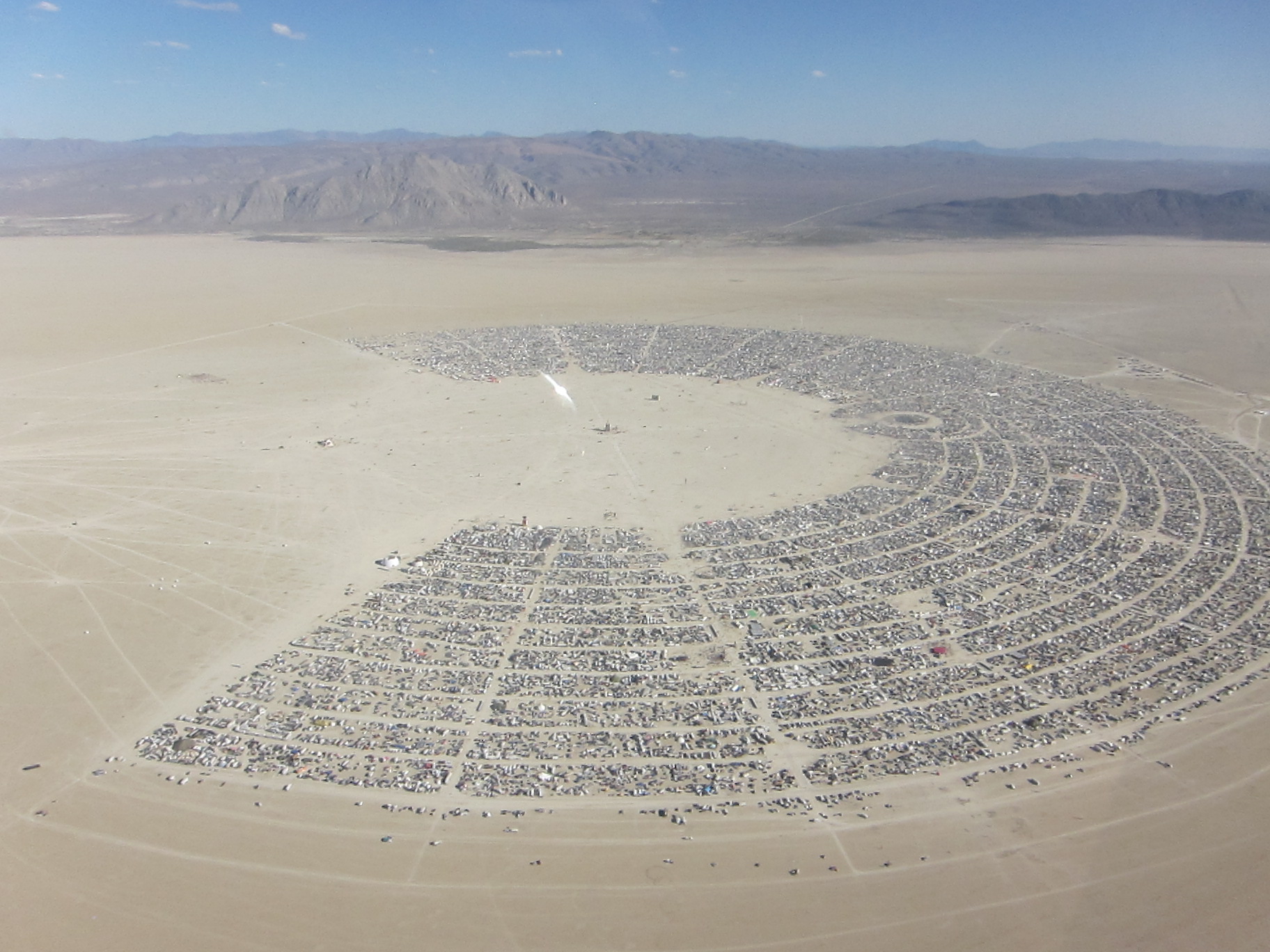
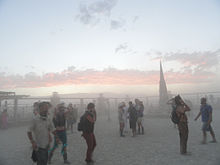






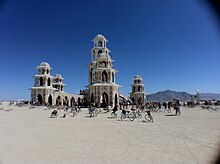



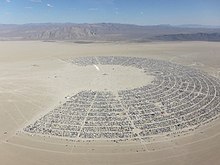


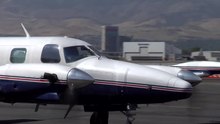


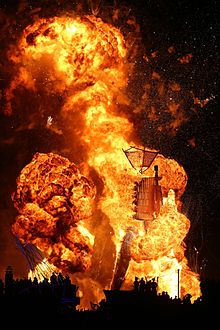

Comments
Post a Comment